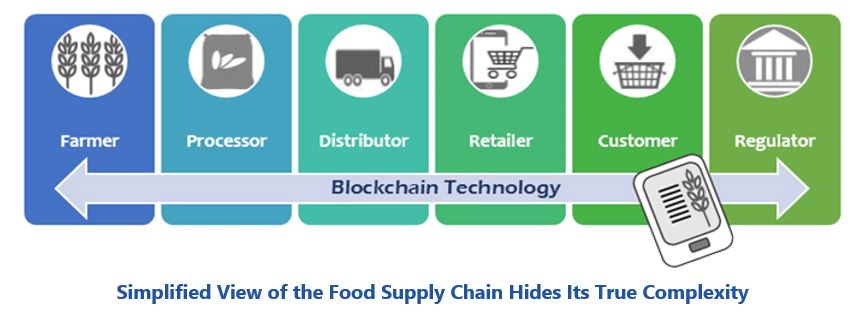

With its large, extended, and varied supply chain, the food industry is the leader when it comes to the number of industrial blockchain consortiums. Among the 37 blockchain consortiums ARC Advisory Group has examined, ten are in the food industry and gaining traction. Those companies involved in the food supply chain should join an applicable blockchain consortium and develop a blockchain IT and operating strategy.
ARC Advisory Group has identified and reviewed 37 different industrial blockchain consortiums for proof of concept, pilot or production programs. The main objectives for these programs include:
Industrial blockchain applications provide self-governing automated business processes that extend across a consortium of stakeholders. Independent entities – some of which are competitors - have common pain points and interests that drive the formation of a consortium of “frenemies.” Typically, the consortium uses blockchain in applications to replace manual methods for transaction processing with business process automation. Of the 37 industrial blockchain consortia, ten are in the food industry – making it the clear leading industry for the application of blockchain.
Complexity involves large numbers, variety, and long chains. In terms of size, there are over three million establishments in the US among farmers, processors, distribution warehouses, and retailers. Europe is similar and Asia much larger. Examples of the variety of interactions include:

The chain of custody includes the series of transfers as a product goes from farm through the supply chain to the retailer. Each transfer involves multiple transactions as it travels through the logistics providers. Simple cocoa beans have more than 15 transactions from farmer to plant for conversion into chocolate (i.e., farmer to processor in the graphic). This includes transportation, warehousing between modes, agents, and government agencies.
The long supply chain can also contain multiple levels of processors. Wheat grain is processed into a variety of types of flour that becomes an ingredient in a wide range of downstream products. In the complete US food supply chain, the path from farmer to retailer has hundreds of transactions among potentially millions of entities.
Industrial blockchains offer significant potential benefits.
Business process automation: The leading application for blockchain involves business process automation to replace manual methods like FAX, email, and paper documents to make transactions with less labor, delays and errors.
Recall size reduction: The second most common blockchain application provides visibility to respond to a recall. The size of a recall can be significantly reduced to the products known to have the problem.
Higher price: “Trust selling” uses track and trace of the food to allow the consumer to know its source. Particularly among younger consumers, people will pay more for products with an ethical or wholesome origin.
All the applications of blockchain in the food industry examined by ARC involve a consortium. The key reasons for establishing a consortium are:
ARC Advisory Group clients can view the complete report at ARC Client Portal
If you would like to buy this report or obtain information about how to become a client, please Contact Us
Keywords: Industrial Blockchain, Food Industry, Supply Chain, ARC Advisory Group.

